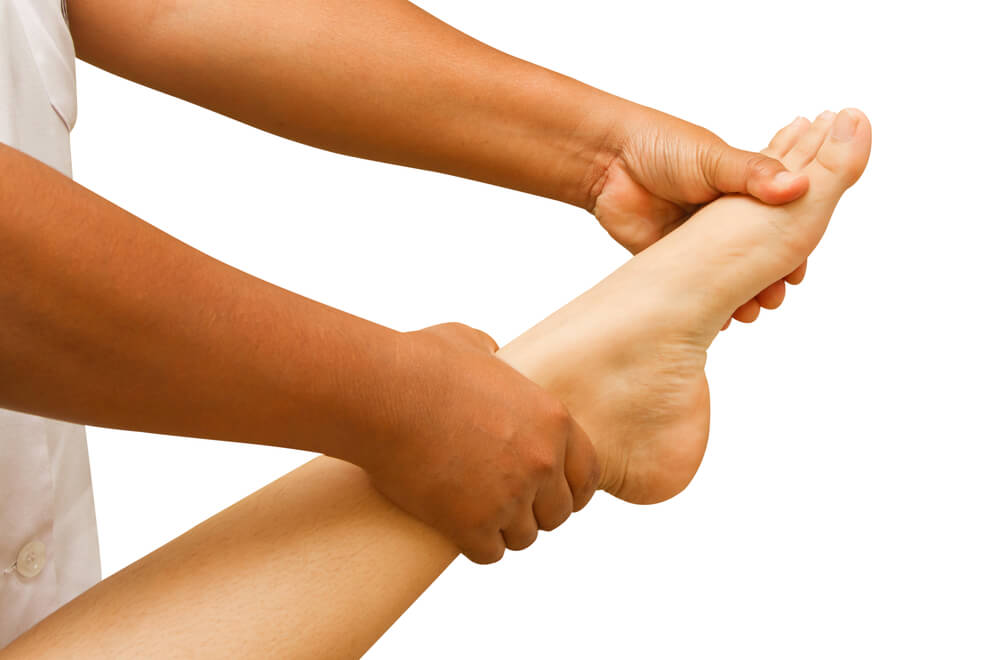Ankle pain can be a disruptive and discomforting experience. It can affect people of all ages and activity levels. The ankle is a complex joint formed by the meeting of bones, ligaments and tendons. It plays a crucial role in helping to support the body’s weight and making movement possible. When ankle pain strikes, it can be caused by a variety of factors. It can impact your mobility and your quality of life. Ankle stretches can be an effective treatment to help ease pain and potentially help you avoid future ankle pain.
Start Your PT Journey Give Us A Call
Understanding the causes of ankle pain
Ankle pain can be caused by an acute injury, a chronic condition or even overuse. Understanding the cause of your ankle pain can be the first step toward developing a targeted and successful treatment strategy. Common causes of ankle pain include:
- Sprains and strains — One of the most common causes of ankle pain is ligament sprains or muscle strains. These injuries are common with physical activities due to stretching or tearing the ligaments or muscles around the ankle. These injuries are the most common sports injury, affecting up to 40% of athletes.
- Arthritis — Osteoarthritis and rheumatoid arthritis can both affect the ankle joint. They can cause pain, swelling and reduced range of motion. Arthritis-related ankle pain can be chronic and progressive. Management is important to help alleviate pain and boost quality of life.
- Tendinitis — Tendinitis is caused by the inflammation of tendons surrounding a joint, like the ankle. It can be the result of overuse, injury or inflammatory conditions. Achilles tendinitis is a specific type of tendinitis that affects the Achilles tendon at the back of the ankle.
- Fractures — Ankle fractures can be the result of sports injuries, accidents or falls. They can cause severe pain and require immediate medical attention. Fractures can involve the bones of the ankle joint or the surrounding foot bones.
- Nerve compression — Conditions like tarsal tunnel syndrome, which is similar to carpal tunnel syndrome in the wrist, involve the compression of nerves in the ankle. Compression can cause pain, tingling or numbness.
- Bursitis — Bursitis is caused by the inflammation of the bursae. Bursae are small fluid-filled sacs that help to cushion and reduce friction between bones and tendons. This inflammation can cause ankle pain when the ankle bursae become inflamed.
Strategies for managing and preventing ankle pain
The key to helping minimize the effects of ankle pain comes from effective strategies that can help not only manage existing pain but also prevent future occurrences. Effective strategies can include:
- Rest and ice — It’s essential to allow your ankle time to heal if an injury has caused your ankle pain. You should avoid excessive weight-bearing activities to give your ankle adequate time to heal. Applying an ice pack to the affected ankle can reduce swelling and inflammation to promote healing.
- Compression and elevation — An ankle injury can cause weakness in your ankle. Using a compression bandage can help provide additional support to your ankle and help reduce swelling. It is also beneficial to elevate your affected ankle to help reduce swelling.
- Supportive footwear — It’s crucial to wear properly fitting and supportive footwear. The correct shoes will provide proper arch support and cushioning to help reduce strain on your ankles. This can potentially help reduce your risk of injury and also reduce ankle pain.
- Physical therapy — Physical therapy can help you strengthen weakened muscles and improve your flexibility and range of motion through various personalized treatments.
Therapeutic exercises and stretches for ankle pain management
Your physical therapist may guide you through therapeutic exercises and stretches that can effectively relieve ankle pain. These therapeutic exercises and stretches may include:
- Calf stretch — Stand facing a wall with your hands pressed against it. Step one foot back, keeping your leg straight. Bend the front knee while still keeping the back leg straight. Hold the stretch for 15 to 30 seconds; then switch legs. Repeat as directed by your physical therapist.
- Achilles stretch — Stand with one foot forward and one foot back. Bend your front knee and keep the back knee straight. Lean forward, feeling the stretch in your Achilles tendon. Hold this position for 15 to 30 seconds; then switch legs. Repeat as directed by your physical therapist.
- Toe tapping — While seated in a chair, lift one foot off the ground. Tap your toes on the floor rapidly for 30 seconds. Switch to the other foot and repeat the exercise. Repeat as directed by your physical therapist.
- Ankle alphabet — While seated in a chair, lift one foot off the ground. Rotate your ankle in the shape of each letter in the alphabet. Set your foot on the ground and swap. Repeat with the other foot. Repeat this exercise as directed by your physical therapist.
- Plantar fascia stretch — Sit in a chair with one leg crossed over the other at the knee. Pull your toes back toward you, using your hand. Feel the stretch along the bottom of your foot. Hold the stretch for 15 to 30 seconds; then switch feet. Repeat as directed by your physical therapist.
Excel Sports & Physical Therapy is your partner in ankle pain relief
At Excel Sports & Physical Therapy, we understand how ankle pain can impact your daily life. Our dedicated team of physical therapists is committed to providing compassionate and personalized care to address the root cause of your ankle pain and provide you with pain relief. Trust us on your journey toward improved ankle health and improved overall well-being.
Call us or request an appointment today to learn how physical therapy can help alleviate your ankle pain.

